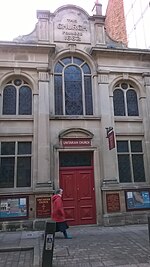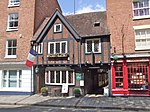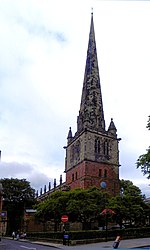New Riverside, Shrewsbury
New Riverside is a proposed £150m shopping centre redevelopment project in Shrewsbury, Shropshire, England, which is planned to link the town's Darwin and former Pride Hill centres and comprehensively redevelop the Riverside centre site. The redevelopment will comprise approximately 50 new shops and 15 new restaurant and cafe units, totalling around 225,000 sq ft and create one, linked and extended centre of 680,000 sq ft. The scheme will be anchored by a Debenhams department store of 95,000 sq ft.Preliminary plans were put to public consultation in July 2011 and the scheme was granted planning permission in April 2012. Work was due to start summer 2013 with completion due late 2015, however a delay to the project was announced in May 2013. The project will now not be started until some time in the future - if at all, as of yet no works have been implemented.
Excerpt from the Wikipedia article New Riverside, Shrewsbury (License: CC BY-SA 3.0, Authors).New Riverside, Shrewsbury
Raven Meadows,
Geographical coordinates (GPS) Address Nearby Places Show on map
Geographical coordinates (GPS)
| Latitude | Longitude |
|---|---|
| N 52.709166666667 ° | E -2.7538888888889 ° |
Address
Raven Meadows Pay and Display Car Park (The Gap)
Raven Meadows
SY1 1BW , Frankwell
England, United Kingdom
Open on Google Maps











